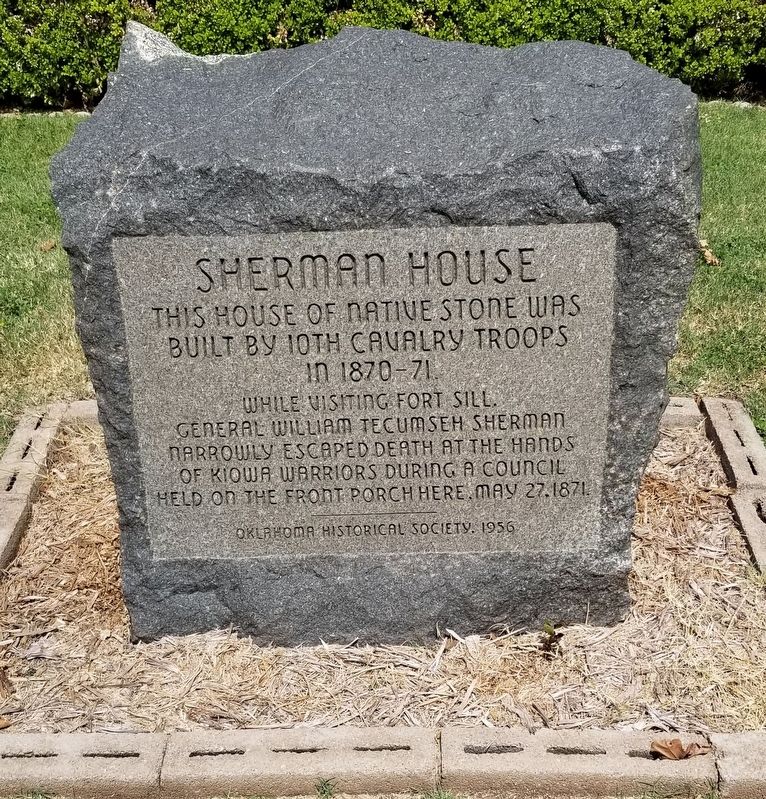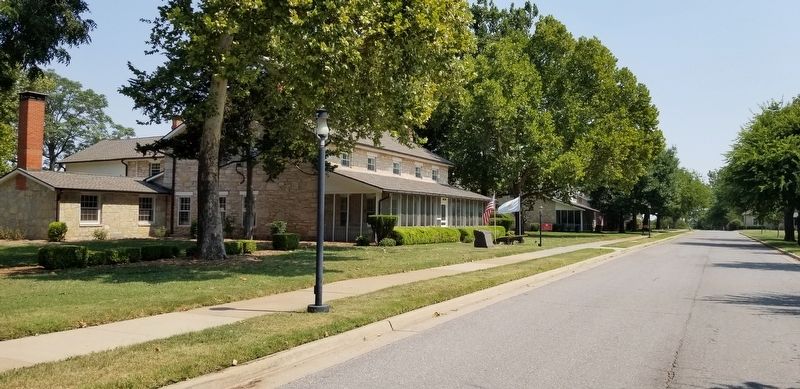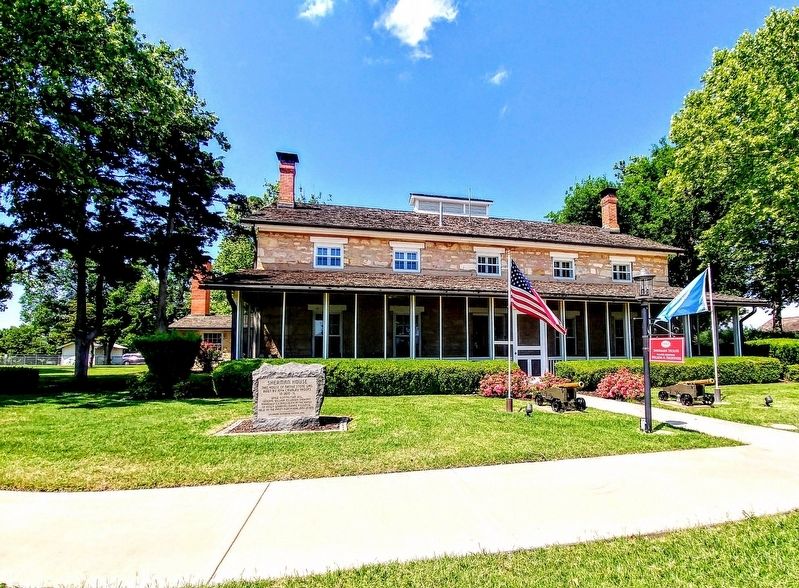Fort Sill in Comanche County, Oklahoma — The American South (West South Central)
Sherman House
This house of native stone was
built by 10th Cavalry Troops
in 1870-71.
While visiting Fort Sill,
General William Tecumseh Sherman
narrowly escaped death at the hands
of Kiowa warriors during a council
held on the front porch here. May 27, 1871.
Erected 1956 by Oklahoma Historical Society.
Topics. This historical marker is listed in these topic lists: Forts and Castles • Native Americans • Wars, US Indian. A significant historical date for this entry is May 27, 1871.
Location. 34° 40.307′ N, 98° 23.173′ W. Marker is in Fort Sill, Oklahoma, in Comanche County. Marker is on Hamilton Road, 0.1 miles west of Chickasha Road, on the right when traveling west. The marker is located on the southwest corner of the house in the front yard. Touch for map. Marker is at or near this postal address: 422 Hamilton Road, Fort Sill OK 73503, United States of America. Touch for directions.
Other nearby markers. At least 8 other markers are within walking distance of this marker. Post Chapel (about 500 feet away, measured in a direct line); Sill (about 700 feet away); Old Post (about 700 feet away); Infantry Barracks (about 700 feet away); Post Headquarters (about 800 feet away); Cavalry Company Quarters (about 800 feet away); Infantry Company Quarters (about 800 feet away); Officers' Quarters (approx. 0.2 miles away). Touch for a list and map of all markers in Fort Sill.
Also see . . . William Tecumseh Sherman.
In 1864, Sherman succeeded Grant as the Union commander in the Western Theater. He led the capture of the strategic city of Atlanta, a military success that contributed to the re-election of President Abraham Lincoln. Sherman's subsequent march through Georgia and the Carolinas involved little fighting but large-scale destruction of cotton plantations and other infrastructure, a systematic policy intended to undermine the ability and willingness of the Confederacy to continue fighting. Sherman accepted the surrender of all the Confederate armies in the Carolinas, Georgia, and Florida in April 1865, but the terms that he negotiated were considered too generous by US Secretary of War Edwin Stanton, who ordered General Grant to modify them. Source: Wikipedia(Submitted on January 24, 2022, by James Hulse of Medina, Texas.)
Credits. This page was last revised on October 24, 2022. It was originally submitted on January 23, 2022, by James Hulse of Medina, Texas. This page has been viewed 459 times since then and 83 times this year. Photos: 1, 2. submitted on January 24, 2022, by James Hulse of Medina, Texas. 3. submitted on October 23, 2022, by Lillian A Fisher of Lawton, Oklahoma.


